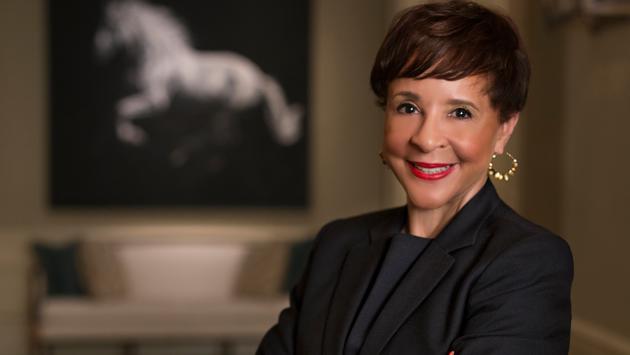
Many of us have thought about how to best transfer our wealth to our heirs someday. The process includes a wide spectrum of approaches either self-guided or guided by attorneys CPA’s, Advisors, Insurance agents, stockbrokers etc. Unfortunately, we see the typical approach that both the high net-worth, as well as the mass affluent, are guided by, only include, or focus mostly, on financial wealth. That translates to parents and grandparents with significant assets in all areas of True Wealth, often missing out and the result is they don’t spend enough time on passing along the values that helped them build, grow, and maintain all types of that wealth.

Previously, we have discussed the idea of different types of wealth by referring to the “Brower Quadrant”. It breaks down wealth into a quadrant with the following categories, Financial, Core, Experience, and Contribution. Each of these quadrants has an overlay of the values your family legacy has in these areas. It is important to address all areas you are living, as well as in your documents with instructions after you’ve passed, or a vacuum will be created.
The resulting “values vacuum” can potentially cause some big problems when either heirs inherit large, financial sums, or in any circumstances in their future life.
- Too often, heirs blow through an inheritance.
- Children might become complacent and might never develop the life skills needed to overcome adversity and generate their own success.
- Wealth can even cause some heirs to believe that rules don’t apply to them, and they shouldn’t be held accountable for their bad actions.
That’s why it’s vital to understand the importance of your values when it comes to your wealth and sense of purpose in life. The good news: There are numerous ways to show your kids or grandkids the connection between the two, so they see the “why” behind decisions made with the family money. (Side tip: “the Power of Why”, Simon Sinek—book or YouTube) Here’s one way to get started.
At Goldbloom Wealth Management, LLC (GWM), we use the “Brower Quadrant” to describe what we base our practice on delivering to our clients, the ability to optimize their True Wealth.
In cataloging the things more important than money to you, make a list of Core, Experience and Contribution Assets in addition to your existing financial balance sheet.
Clarify your values
The first step to take, if you haven’t already, is to get clear on your own values and attitudes toward wealth and success—and which of those values you most want to instill in your family members. After all, if you don’t know the values that drive your own behavior in terms of spending, saving, working, investing, being charitable and the like, you can’t very well pass those values on to others effectively. As you may have experienced here with GWM, we are happy to engage in a discussion that helps to achieve clarity in these areas.
To that end, define the beliefs that you’d like to see heirs adopt and adhere to when making financial (and all) decisions in their lives. You can think through this process yourself or work with a trusted advisor to brainstorm ideas. In general, family patriarchs and matriarchs tend to land on a few key values they want to see shared by their heirs.
- Gratitude—at so many levels
- Self-reliance—the ability to financially “stand on your own two feet”
- Education—an appreciation of the value of higher learning
- Critical thinking—the ability to navigate through challenges
- Fiscal prudence—the knowledge of how to live within their means, make smart financial decisions and grow their wealth over time
- Motivation—the drive to work hard to achieve what they most want out of life
- Philanthropy—an interest in helping others who need support
- Kindness—at so many levels
Although these are common values, your own list may look somewhat—or very—different. That’s okay. The key is to get clear in your own mind which values you want to pass on. We suggest you take care of each area of True Wealth: your Financial, Core, Experience, and Contribution, and make a list of what you value in each category.

COMMUNICATION AND ACTION
Many of our clients believe that one of their biggest jobs is to have conversations with family members on the subject of money and values so you can begin to instill your beliefs and hopes. Communicate the values you care about and explain why you see those values as so important to heirs’ realizing a good life.
This cannot be a single, one-and-done talk. Instead, have ongoing conversations over many years as your heirs grow and mature. Basic dialogues with a young child about, say, the importance of balancing wise spending with consistent saving might progress into more advanced discussions with adult children about investment strategies, joint accounts with spouses and college funding. A very effective way to transfer values is through real stories that you name, or the name can be referred to, in future years, and by hearing it, the values from the story can easily recalled.
The upshot: Start early, then consistently communicate over time, to help them develop a sense of financial responsibility, motivation to achieve, and live a life optimizing True Wealth.
Important: Talking about wealth and values doesn’t automatically mean you need to reveal your net worth or how much money an heir may one day inherit. You can discuss the importance of being a good steward of wealth without diving into the actual numbers.
Putting words into action
Living your legacy while you’re alive is what it’s all about! All that said, if you want your kids to share your wealth-related values, you’ve got to walk your talk. Here are some ways to do that at various stages of their lives.
1. Create a formal family values statement together. Write up a document spelling out the values you agree on as a family—adding to it over time based on new discussions.
2. Involve kids in select financial decisions. Give kids real-life experiences with how money, choices and values interact. Ask younger kids for their input about where the family should go for a vacation based on a set travel budget. Get older children involved in choosing charities or causes the family should consider. Bring adult children into the process of how to invest family wealth.
3. Demonstrate the power of saving and compounding. As early as possible, set up a brokerage account, bank account, or even a piggy bank for your kids. When they get money, have them set some aside toward future goals or purchases. And consider matching their deposits, as an employer might do with a 401(k). Kids will quickly see that saved money can mean more money. Many of our clients teach the practice by having their kids or grandkids pick some stocks of companies they recognize and watch through the months and years for what happens.
4. Create a family bank. Some affluent families establish informal family “banks” for lending money to their adult children who need funds to buy a home, start a business or pay for some other major life expense. Rather than simply handing money over, the family patriarch or matriarch can act more like a bank that is loaning money to the child—thus creating a more real-world experience. At GWM, we help create structure for families that leverages these financial transactions by optimizing growth while minimizing taxes.
5. Live your values “out loud.” You may tell your children you want them to care about helping others in need or being “smart” with their money—but do they see you actively doing so in your own life? Communicating your values about wealth, success and purpose to your children won’t guarantee that they will avoid negative outcomes—or become the world’s greatest CEOs. But in our experience, heirs who understand how their parents and grandparents view such issues tend to be more driven to make their way in the world and be better stewards of assets they receive.
ACKNOWLEDGMENT: This article was co-produced by Goldbloom Wealth Management, LLC, and the VFO Inner Circle. VFO Inner Circle is a global financial concierge group working with affluent individuals and families and is distributed with its permission. Copyright 2020 by AES Nation, LLC.
This report is intended to be used for educational purposes only and does not constitute a solicitation to purchase any security or advisory services. Past performance is no guarantee of future results. An investment in any security involves significant risks and any investment may lose value. Refer to all risk disclosures related to each security product carefully before investing. Securities offered through Goldbloom Wealth Management. Steve Goldbloom is a registered representative of Goldbloom Wealth Management Steve Goldbloom and Goldbloom Wealth Management are not affiliated with AES Nation, LLC. AES Nation, LLC is the creator and publisher of the VFO Inner Circle Flash Report.
Ready To Take The Next Step?
For more information about any of our products and services, schedule a meeting today or register to attend a seminar.
